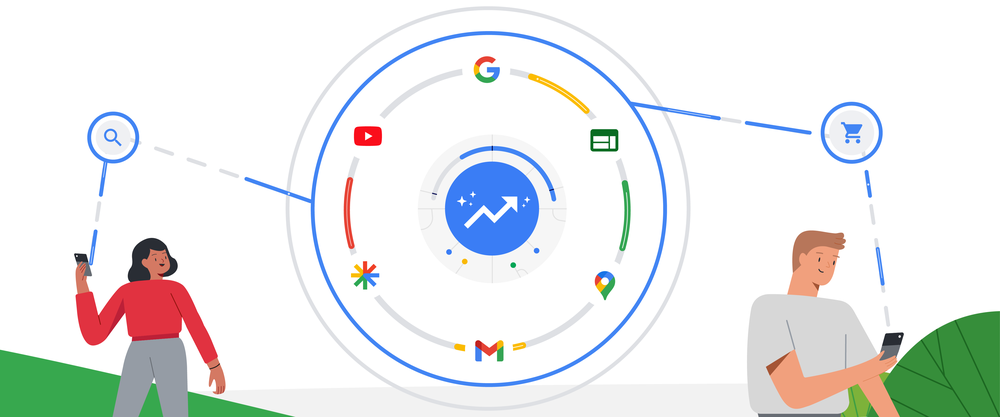As we have already discussed in previous posts, there are many possibilities within SEM campaigns, specifically Google Ads, that allow us to generate leads without the need for the user to actually visit our website.
One of the main primary tools at our disposal are lead form extensions.
Lead Form Extensions What are they?
As the name implies, these are ad extensions, that is, they appear next to the ad text without being part of it. We have already seen in the previous post that there are many types of extensions with a variety of functions. In the case of lead form extensions, this format includes a fairly customizable contact form that allows us to collect potential customer data directly from the advertisement itself. The user can directly leave their information without visiting the advertiser’s website at any time, taking advantage of a single point of contact with minimal fuss.
These extensions were in beta until 2019 and are now available across all accounts for any advertiser who wants to use them.
The design is relatively simple and consists of 3 steps:
- Initial call to action: The first button the user sees when viewing the ad.

- Form: With the fields selected for the user to fill out.

- Confirmation message: once the user has filled in their details on the form and clicks “submit”, their submission is confirmed and they have the option of visiting the website, if they want.
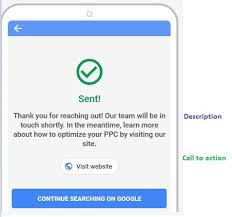
The two main advantages of such lead ad extensions are the ability to:
- Increase the number of leads, especially on mobile devices as it simplifies navigation and consequently increases sales of your service or product.
- Discover users who have a real interest in your products or services, as well as capture their attention and include them in our remarketing lists.
How do Lead Form Extension work?
When users search Google, they’ll see the contact form right below your ad. By clicking on the CTA (call to action), users will be able to interact with the form by completing the fields. This allows you, the advertiser to obtain new leads, collect certain information about users and track them.
Where’s all this information going? Is it safe?
Google takes the collection and protection of user data quite seriously. For that reason, when we create our extension we must include in a specific space for our privacy policy URL so that users have the opportunity to read it before providing their data.
There are two ways to handle all the information collected by these forms:
- Download a CSV file. From the Google Ads platform and use it as is internally or manually integrate it into your CRM.
- Use a webhook to connect these extensions to your CRM in real time, so that each lead that enters through the form is automatically passed to your CRM automatically and immediately, without any data loss. We frequently use Zapier in connection with Salesforce or HubSpot, but there are many other options on the market. It’s a matter of selecting the one that works best for each case.
How do I create lead form extensions?
To get started, you’ll need to sign in to your Google Ads account, and go to the “ads and extensions” section. Once there, simply select “add lead form extension” and begin setup, which consists of 3 phases:
- CTA or action call is the user’s first point of contact with the form before interacting with it. There are several options:

- Ask for a quote
- Request it now
- Register
- Contact us
- Subscribe
- Download
- Book now
- Get the offer
- Create the form: this section is the most important and we will have to fill in several fields:
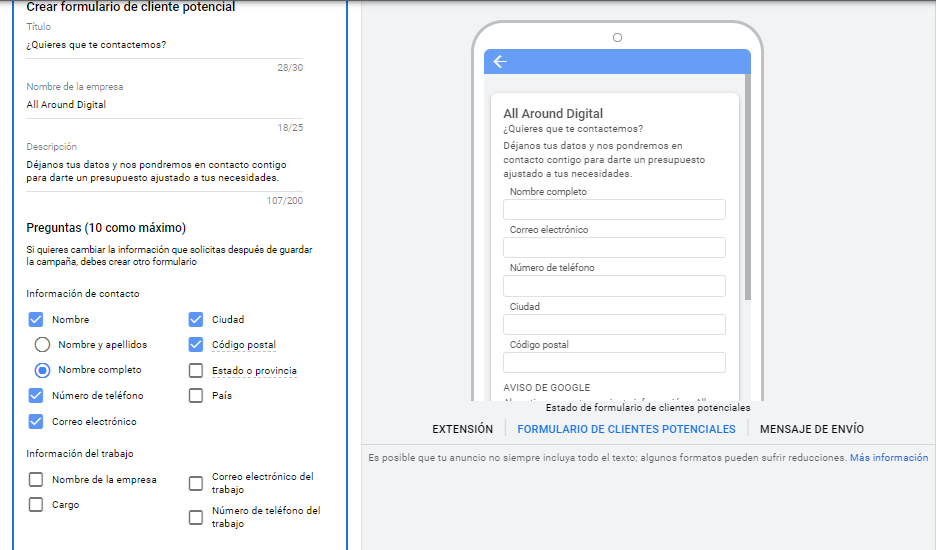
- Form title
- Advertiser’s name
- Description: (what we’re going to use the data we’re requesting for)
- Form Questions:
The maximum questions allowed are10 and include many predefined options with basics like phone, first and last name, city, post code, country, email address… or more professional details such as company name, position, and work phone number.
If we still need some ad-hoc questions, we have the possibility to include additional questions on a lot of topics: Education, employment, company, real estate market, automotive, transportation, travel and a few more general ones.
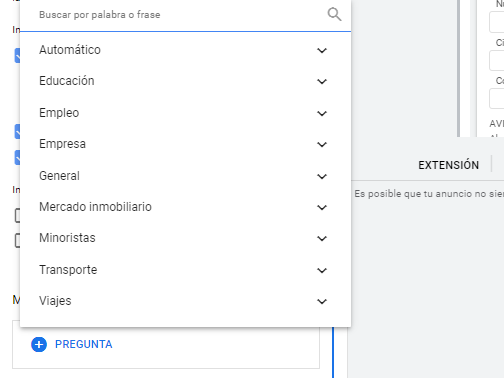
These additional questions can be included as multi-answer (offering multiple options to the user) or as an open answer, leaving the user to fill in the field directly.

- Include the URL for your privacy policy
- Select a background image: ideally something attractive that transmits your brand image
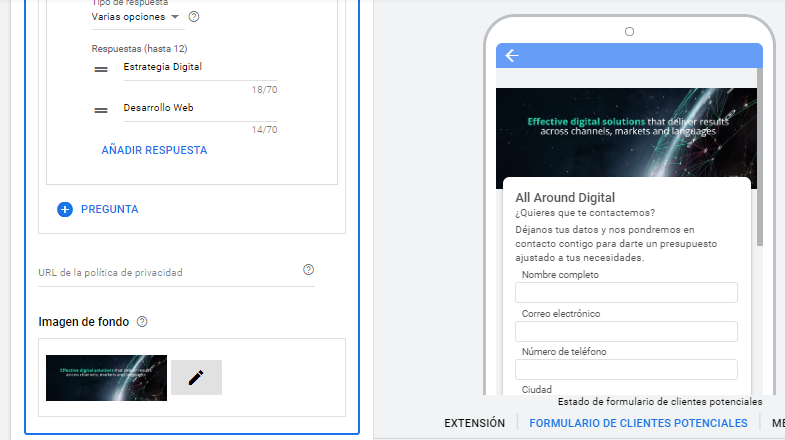
- Sent message: as mentioned above this confirms to the user that their data has been sent, it frequently includes a thank you message and it includes a web visit link.
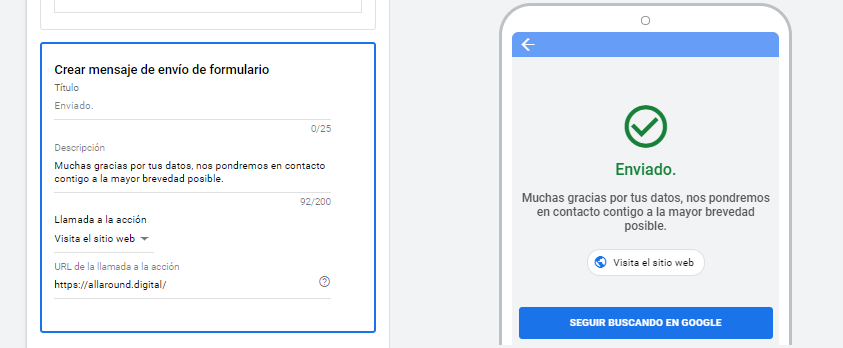
With these three steps complete, our form is ready. If we have decided to handle lead details through manually downloading a CSV, we would only have to save it and wait for the Google approval process for the form to start showing in our ads.
If, on the other hand, we have decided to use a webhook that sends lead form data directly to our CRM, there is one last step: we’ll need to include the URL of the webhook connector that we are using and a text that allows us to test and check that the webhook is delivering the data correctly.

SEM campaigns, and specifically the Google Ads platform, are constantly evolving and it’s easy to lose touch of all the improvements and tools on offer if you don’t have an expert PPC team to guide you. Lead gen is an ever-changing area, so if you want to design a lead generation strategy and explore form extensions and other marketing tools oriented towards that goal, contact All Around, the lead generation experts.
More posts about: Generate more leads






